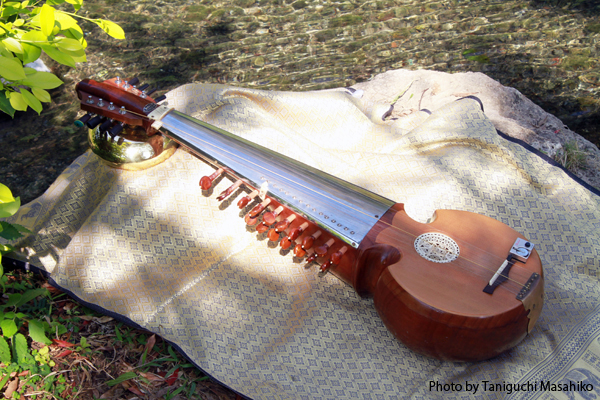The sarod is a traditional stringed instrument from India which typically features a metal fingerboard and sheep or goat skin on a wooden body. Unlike other instruments, the sarod’s neck and body are carved from one thick piece of wood, giving it a unique shape. It also has four main melody strings, six open strings to maintain continuous tone, and fifteen sympathetic strings.
The E-Sarod, designed by Wataru Kousaka in Okinawa, Japan, is a modification of the traditional sarod. In collaboration with two artisans, Kousaka replaced the goat skin with a spruce board decorated with an Italian rosetta on the sound hole, added a an under-saddle pick-up, and shortened the head while changing the large wooden pegs to guitar pegs. It also features a thicker bass string in D.
The playing technique for the E-Sarod is quite different from that of the traditional instrument. While a sarod is typically played with a coconut shell plectrum, the E-Sarod is meant to be plucked by a finger nail, with the slapping technique of the thumb used to create powerful bass sounds. It is also played with the erfu bow. The electrification of the E-Sarod allows for it to be played on loops, in which melodies from both plucked and bowed sounds become harmonies.
More about instruments of Omsenkyo.
Singing-ring
Zanmai-kin
Sanshin
Listen to the tune! “Kuh” & “Budhaiju” on soundcloud.
